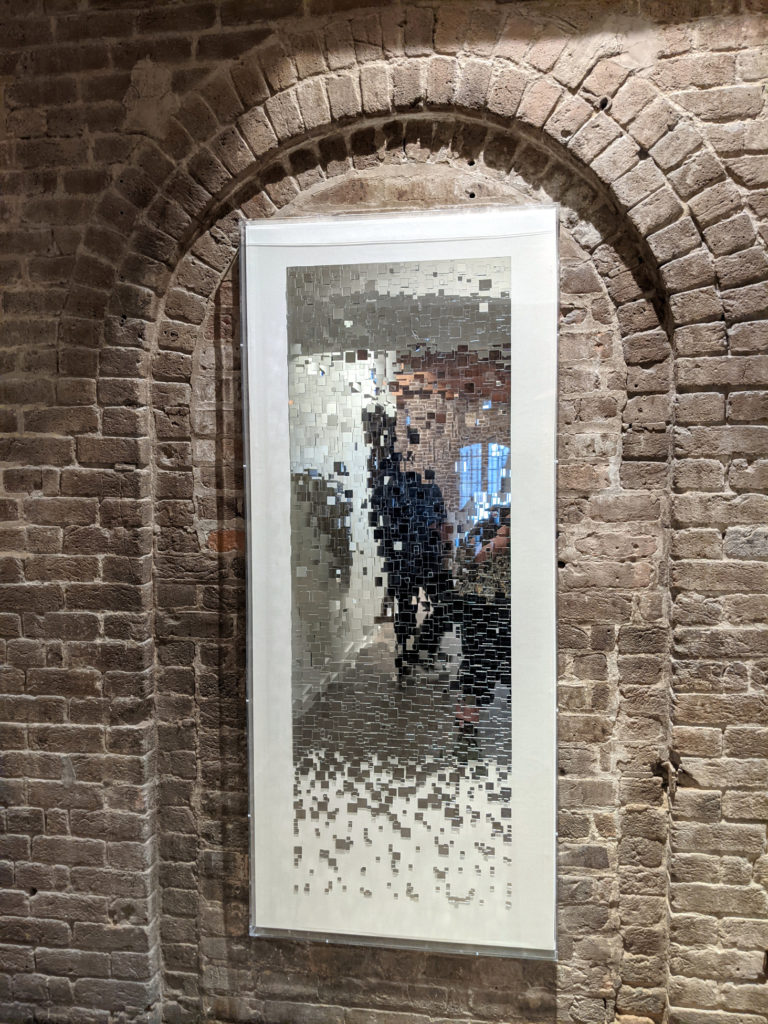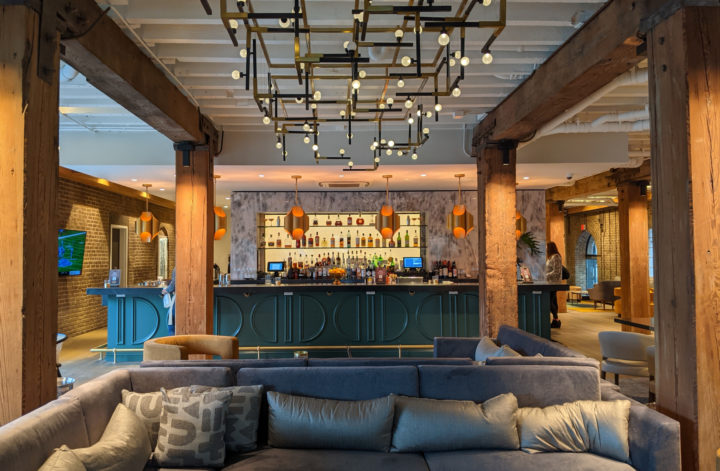In the midst of shutdowns, Hotel One11 emerges as the French Quarter’s newest hotels in over 50 years.
One of the last architectural remnants of the Louisiana Sugar and Rice Exchange, the building on the French Quarter’s riverfront stood derelict for over 30 years. The almost 150-year-old structure began life as a molasses warehouse, but over the years it has been home to an architectural and design firm, a restaurant, and in early 2022 it was transformed into a boutique hotel, the first new hotel opened in the French Quarter in over half a century.
The One11 Hotel featuring 83 guest rooms and “sweets,” came into being after surmounting a deluge of obstacles spanning almost 15 years. First and foremost was getting approval due to the New Orleans City Council’s 1969 moratorium which prohibited new hotels and hotel rooms in the French Quarter. The moratorium was in place to protect the neighborhood, which at that time was largely residential. Owner and developer Wayne Ducote fought this ruling, stating how existing hotels had been adding rooms “under the radar” for years, and initially gained approval, but in 2004 former mayor Ray Nagin vetoed it. Less than a year later, Katrina hit, devastating the area and setting back development projects not only in New Orleans, but all across the Gulf coast.



About a decade later, the developer once again applied for the project’s approval, and received it. But in August of 2012, an electrical fire broke out in the empty, Iberville Street building. Using the insurance money, Ducote began making improvements to the building, starting with the windows. “The first major renovation of this structure was the effort to replace all of the fenestration throughout the building,” says Dixon Jelich, project manager and designer of Williams Architects. “All of the windows in the entire building were completely replaced and rebuilt to historic standards.”

Yet another hurdle arose when the structural engineer condemned the building after discovering that all of the interior columns didn’t have footings. It took almost two years to correct this major design flaw. “We had to shore the whole building up one piece at a time, take the column line out and put a new footing and column at the base under the ground floor,” says John C. Williams, Principal Architect at Williams Architects. “It was what I call the hole, 2016 and 2017, nothing happened other than a very slow replacement of those interior columns.”
After surpassing these major drawbacks, including a delayed opening day due to the pandemic, the historic ONE11 Hotel finally opened its doors on January 11th, 2021. The finished hotel almost seamlessly flaunts an elegant mesh of old and new, a characteristic its owner explicitly desired. “Wayne [Ducote] really wanted to tell the story of the building in every single room,” says Jelich. “It was integral to the design process that we expose the original structure at the greatest expense possible.” Original wood columns, steel bracers, metal pipes, and exposed brick can be found all throughout the hotel, with the exception of the penthouse suites which were all-new construction added to the roof. The exterior of the hotel also sports huge pieces of metal embedded into the walls, a throwback from the building’s days as a molasses warehouse when conveyor belts connected it to adjacent refinery structures.

David Ashen, founder of New York City-based interior design firm dash design, was hired to give a clean and modern edge to the historical riverfront hotel. In a beautiful juxtaposition, Ashen used contemporary furniture and fixtures which surprisingly compliment the purposely exposed architecture. “I didn’t want to fake fittings to make things look kind of kitchy/factory, but be purposeful in the design,” says Ashen. “The Ducotes, in a good way, are very particular and there was a lot of discussion over every detail about how to get the cleanest look and stay in good taste.” The whole design narrative centered around the building’s history as a molasses warehouse and sugar refinery, down to the warm caramel color palette, granular textures and even the artwork. A collage of mirrored squares by Atlanta, Georgia artist Darby Boruff gives a sort of abstract impression of sugar cubes cascading down the canvas. “They [developers] were looking for a more bespoke experience. It’s a small hotel, and they wanted it to feel fresh and modern, but also in this really amusing, old factory building. It was a challenge.”

Though the building’s history is celebrated throughout, there were a few pieces of new construction incorporated to not only comply with rules set out for historical renovations, but also to round out the modern hotel experience. Unable to close off the old loading bays facing N. St. Peter Street, they took the existing concrete dock, enclosed it in retractable window walls and created a stunning dining space that can be used as a private room or for overflow from the adjacent Batture Bistro & Bar within the hotel. Another new-built space, located right next to the loading dock dining room, is the pool area which is enclosed by a high wall covered in iridescent tile and accented with fountains. “When the ivy grows in it will be this lush, little oasis and you don’t get the sense that you’re in a parking lot,” says Ashen.

Finally, when the building was first constructed in the late 19th century, it rose seven stories over the Vieux Carre, but now it has eight. The top floor is entirely new construction featuring several expansive and elegant “sweets.” Though the 8th floor is sadly lacking key historic features like exposed brick walls and massive wooden columns, they make up for it with an incredible view. Not only do the suites offer large windows, each one also has its own private terrace commanding sweeping views of the sinuous Mississippi River or the historic French Quarter, depending upon which side of the building you’re on. Plus, penthouse guests aren’t the only ones who can appreciate the view, a portion of the deck is available for all of the hotel’s patrons to enjoy. “I think it’s one of the best buildings in the French Quarter,” says Jelich. “To work on these historic structures is rewarding, as much as it is interesting.”
*Article was originally published May 2023 in the French Quarter Journal



